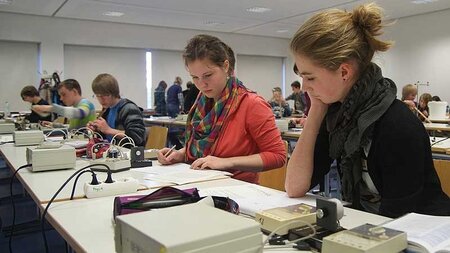Hardware
HPC-Cluster: MainSim
- Forschungsgroßgerät im Forschungsbau MAIN gemeinsam mit Professur SKALMOD
- 36 Intel Xeon CPU-Knoten (24 Kerne)
- 4 GPU-Knoten, je 2 Tesla P100 + 2 freie Slots
- 48 TFlops
- RAM 11 TB, min. 256 GB/Knoten
- Storage 100 TB, Backup 72 TB
- Infiniband network 56 Gb/s
- Head node, Web Server, Desktop-Virtualisierung
- cent OS Linux
HPC-Cluster: EnsSim
- Head node: 8 cores, 64 GB RAM
- Storage node: 8 cores, 32 GB RAM
- Compute nodes:
- 16 Opteron: 48 cores, 128 GB RAM
- 3 Opteron: 48 cores, 256 GB RAM
- 3 Xeon: 20 cores, 256 GB RAM
- VM node: 10 cores, 64 GB RAM
- Backup node: 12 cores, 32 GB RAM
Arbeitsplatzrechner
- Pool C50.239 mit Direktanbindung MAINSIM
- Verteilter zentral administrierter Pool im Forschungsbau MAIN gemeinsam mit Professur SKALMOD
- centOS Linux
Serverrraum
- 6 wassergekühlte 19"-Racks im Forschungsbau MAIN gemeinsam mit Professur SKALMOD
Software
- Materials Studio
- CASTEP
- DMol3
- ONETEP
- cFour
- gDFTB
- LAMMPS
- QuantumEspresso, Yambo
- QuantumWise
- Atomistix ToolKit (ATK)
- NanoLanguage (NL)
- Virtual NanoLab (VNL)
- SIESTA, TranSIESTA
- SynopsisTCAD (Europractice)
- ...





